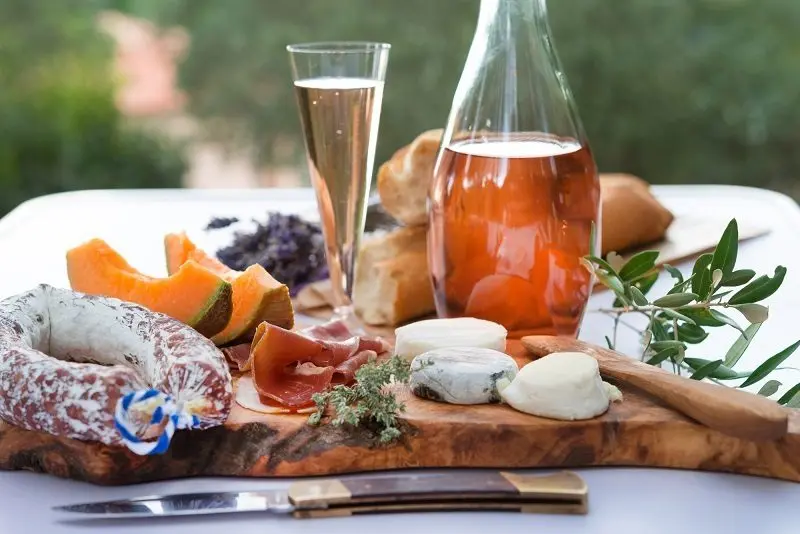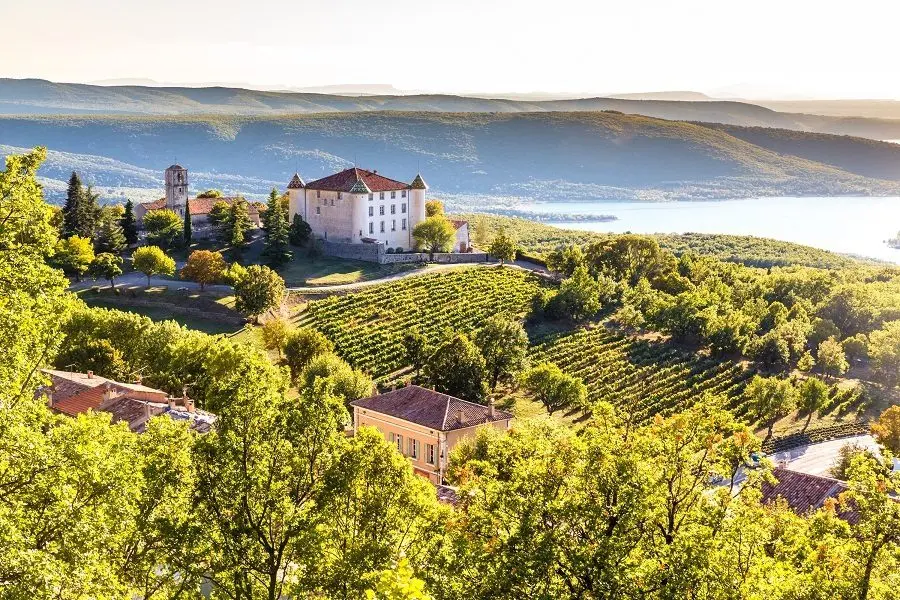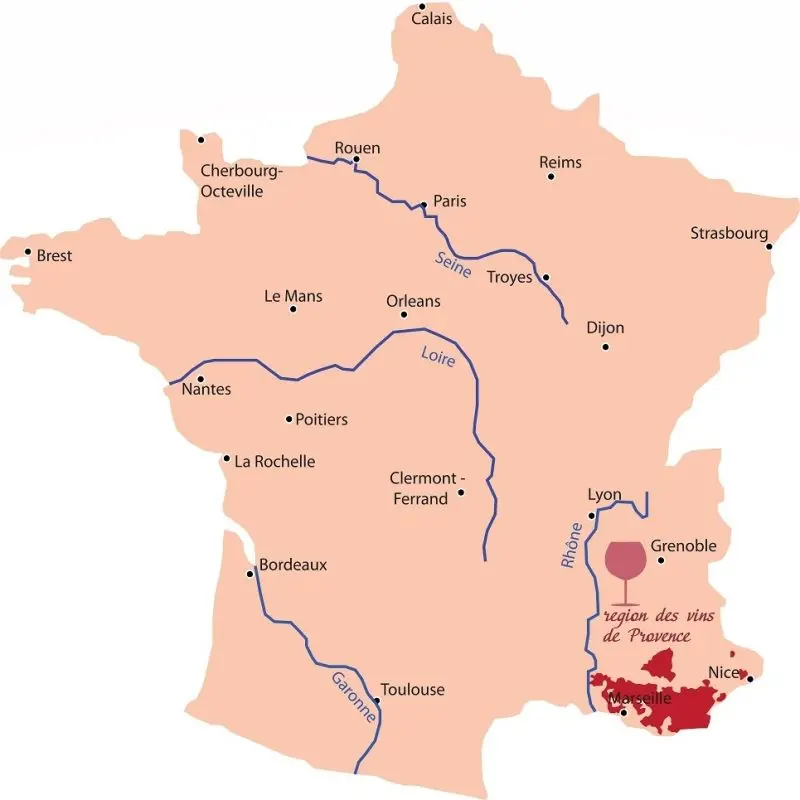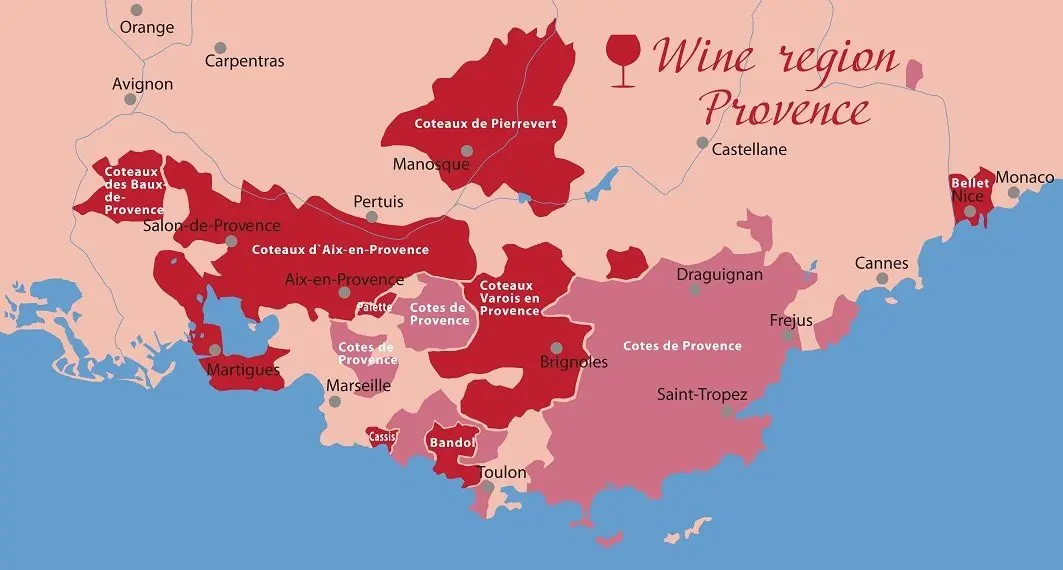Contents
Provencal wines, as the name suggests, are made in the Provence region of southern France. Winemaking here originated in the VI century. BC, when the Greeks founded the city of Massalia (today’s Marseille). Over the past two thousand years, local winemaking has been influenced by the Greeks, Romans, Gauls, Catalans and the inhabitants of the Savoy region. At the same time, each of the groups brought something of their own. Thanks to such a rich history, the region features both Roman and Greek, as well as traditionally French, Spanish and Italian grape varieties.
The wines of Provence are very diverse, but outside the region, the most famous are the rosé varieties (Rosé), which account for more than half of the total production. Another third is occupied by red brands – they are distinguished by a full body and a tart taste with hints of spices. The share of white wine is insignificant, its production is concentrated mainly around the city of Cassis.

According to some reports, 88% of all Provencal wines are rosé.
Geographical location
The Rhone River runs along the western border of Provence, in the east the region is bounded by the Côte d’Azur. It is a relatively small area, 240 km long and 160 km wide. An ideal climate for wine production has been established here: sunny, with little rainfall, warm days and cool evenings, without sudden changes in temperature. Thanks to the mistral winds, it is never too wet here, so the vines are rarely exposed to rot and pests.

The vineyards are located both on hilly areas and in the plains, the soils vary from limestone in the west to shale and volcanic in the east.
All this affects the taste of wine, and aromatic herbs growing here in abundance add additional notes to the bouquet: lavender, rosemary, thyme, juniper.
Varieties of Provence grapes
White:
- Rolle, aka Vermentino (Rolle aka Vermentino);
- Ugni Blanc, aka Trebbiano (Ugni Blanc aka Trebbiano);
- Bourboulenc;
- Clairette;
- Марсан (Marsanne);
- Ruzan (Roussanne);
- Grenache Blanc.
Sémillon and Sauvignon Blanc common in Bordeaux are also found here. Autochthonous varieties such as Pascal, Terret Blanc, Spagnol (aka Mayorquin) and Pignerol are grown less frequently and may soon disappear altogether.
Red:
- Grenache Noir;
- Syrah;
- Мурведр (Mourvedre);
- Carignan (Carignan);
- Цинсот (Cinsault);
- Counoise;
- Таннат (Tannat);
- Cabernet Sauvignon.
Unique autochthonous varieties: Tibouren, Braquet, Calitour, Folle Noir and Barbaroux.
In total, Provence is allowed to make wine from 36 varieties.
A Brief History of Winemaking
In the VI century BC. Provence was a trading region, its own wine was produced here, and foreign samples were brought. Historical evidence claims that in those days red wine dominated here, but it was not “red” in the modern sense of the term – the pulp was almost not aged, i.e. skin contact was minimal, resulting in a very pale pink drink.
By the XNUMXnd century AD when the Romans occupied the region, local rosé wines were already well known far beyond the borders of Provence. Advanced for that time, Roman technology and transport routes only contributed to their further spread.
Subsequently, the region passed from hand to hand, alternately finding itself under the rule of the Burgundian kingdom, then under the rule of Barcelona. The Catholic monasteries that planted vineyards, many of which have survived to this day, also had a huge impact on local winemaking.
Despite the fact that Provence is considered one of the most underrated wine regions in France, its Rose is still known and in demand all over the world.
Wine regions of Provence


- AOC Côtes de Provence. The largest appellation in Provence, which accounts for 75% of all wine production (89% of local wines are rosé). It is divided into four subzones:
- Sainte-Victoire (limestone soils and covered vineyards);
- La Londe (quartz soils, low rainfall, constant sea breezes, main varieties are Cinsault and Grenache);
- Fréjus (volcanic soils, the region is famous for its red Tibouron grapes of Greek origin, notes of copper and salmon are felt in local wine, and red species are aged for at least six months in oak barrels);
- Pierrefeu (the youngest sub-region, appeared in 2013, the varieties Grenache, Syrah and Cinsault are mainly cultivated here, and the taste of local wine is influenced by wild-growing sweet fennel).
- AOC Coteaux d’Aix en Provence. The second largest appellation, there are vineyards planted in the XNUMXth century BC. The local rosé is made by blending Grenache, Mourvedre, Cinsault, Syrah and Counoise varieties.
- AOC Coteaux Varois de Provence. “Heart of Provence”, the region is characterized by a wide variety of microclimates. The vineyards are located slightly higher than in other appellations, therefore, the berries ripen at lower temperatures, and the wines are distinguished by high acidity, good structure and complex bouquet.
- AOC Les Baux de Provence. The hottest appellation, biodynamic and organic wines are produced here. Unlike the previous zones, the region specializes in red brands.
Biodynamic and/or organic wine – wine made from “organic” grapes grown without the use of chemical fertilizers and pesticides. These terms do not have a strict definition, each winemaker implies a different set of characteristics under them.
- AOC Cassis. The first Provencal appellation appeared in 1936. The region was hit hard by the phylloxera epidemic, but has fully recovered and now produces white wines from the Marsanne and Clairette varieties. Local samples are distinguished by a delicate “elegant” taste, strong aroma, tones of citrus, peach, honey and dried herbs.
- AOC Bandol. An appellation specializing in strong, aged 18 months in oak barrels, aromatic red wine from the Mourvedre variety. The local rosé and white wines account for no more than 5%.
- AOC Palette. The smallest appellation, occupying only 100 acres. However, 25 varieties of grapes are cultivated here (many of them are indigenous), local red wine must be aged for 18 months in oak barrels, and white and rosé wine is aged for at least 8 months before being sold. The unique taste of local boends is explained by the use of unique varieties: Panse Muscade, Terret Gris, Piquepoul Blanc, Aragnan.
- AOC Bellet. The only appellation where Chardonnay is allowed to be cultivated. The region is famous for its Braquet and Folle Noire rose varieties, and rose petals are felt in the aroma of this wine.
- AOC Pierrevert. The youngest of the appellations, appeared in 1998. At least 50% of the local wine is made according to the saignée method, in which part of the juice is drained about 2 days after the start of fermentation, and the remaining liquid is left to ripen in contact with the pulp. Thanks to this, the local rose is much brighter and richer than analogues from other appellations.
The wines of Provence are often brought to the market in original hourglass-shaped bottles. Such containers are called skittle.
Famous styles and brands of Provencal wines
Provence produces literally dozens if not hundreds of different styles of wine, but some of them are worthy of especially close attention.
Côtes de Provence Rosé
This rosé wine is great for noisy events, hot summer days, long journeys. It has notes of strawberries, lemon peel, sweet cherries, white peach, plums, creamy cakes, white flowers. The drink is best combined with salmon, strawberries, spinach salad, seafood. One of the famous producers of this style: Chateau d’Esclans.
Bandol Red
Red wine for formal occasions or a gala dinner. The bouquet has nuances of black cherries, blueberries, blackberries, sage, black pepper, licorice root, smoked chocolate. Forms harmonious gastronomic pairs with red meat, steaks, pork chop. Most recognizable brand: Domaine Tempier.
Tibouren Rosé
Rose wine for romantic dinners, picnics, family barbecues. The bouquet has orange peel, allspice, white raspberry, lemon, salt. Combines with spicy dishes, Indian cuisine. Famous manufacturer: Clos Cibonne.
Cassis
White wine for a quick snack, lunch, meeting with friends. The bouquet is distinguished by tones of white peach, lemon, yellow apple, honeysuckle, hay, salted almonds. Combines with egg salad, zucchini, lemon dishes, pasta, sushi. Famous representative: Domaine du Bagnol.









